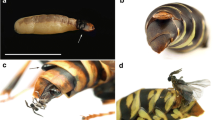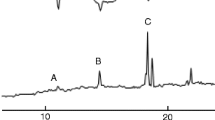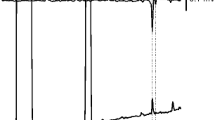Abstract.
Pheromone extract of female pink gypsy moth, Lymantria mathura, was analyzed by coupled gas chromatographic-electroantennographic detection (GC-EAD) and coupled GC-mass spectrometry (MS), employing fused silica columns coated with DB-5, DB-210, or DB-23 and a custom-made GC column that separated enantiomers of unsaturated epoxides. These analyses revealed (9R,10S)-cis–9,10-epoxy-Z3,Z6-nonadecadiene [termed here (+)-mathuralure] and (9S,10R)-cis–9,10-epoxy-Z3,Z6-nonadecadiene [termed here (–)-mathuralure] at a 1 : 4 ratio as major candidate pheromone components. In field experiments in northern Japan (Morioka, Iwate Prefecture and Bibai, Hokkaido Prefecture), (+)- and (–)-mathuralure at a ratio of 1 : 4, but not 1 : 1 or singly, were attractive to male L. mathura. This is the first demonstration that attraction of male moths required the very same ratio of pheromone enantiomers as produced by conspecific females. Whether L. mathura employ different blend ratios in different geographic areas, and the role of five additional candidate pheromone components identified in this study remains to be investigated.
Similar content being viewed by others
Author information
Authors and Affiliations
Additional information
Received: 29 October 1998 / Accepted in revised form: 29 December 1998
Rights and permissions
About this article
Cite this article
Gries, G., Gries, R., Schaefer, P. et al. Sex Pheromone Components of Pink Gypsy Moth, Lymantria mathura. Naturwissenschaften 86, 235–238 (1999). https://doi.org/10.1007/s001140050606
Issue Date:
DOI: https://doi.org/10.1007/s001140050606




